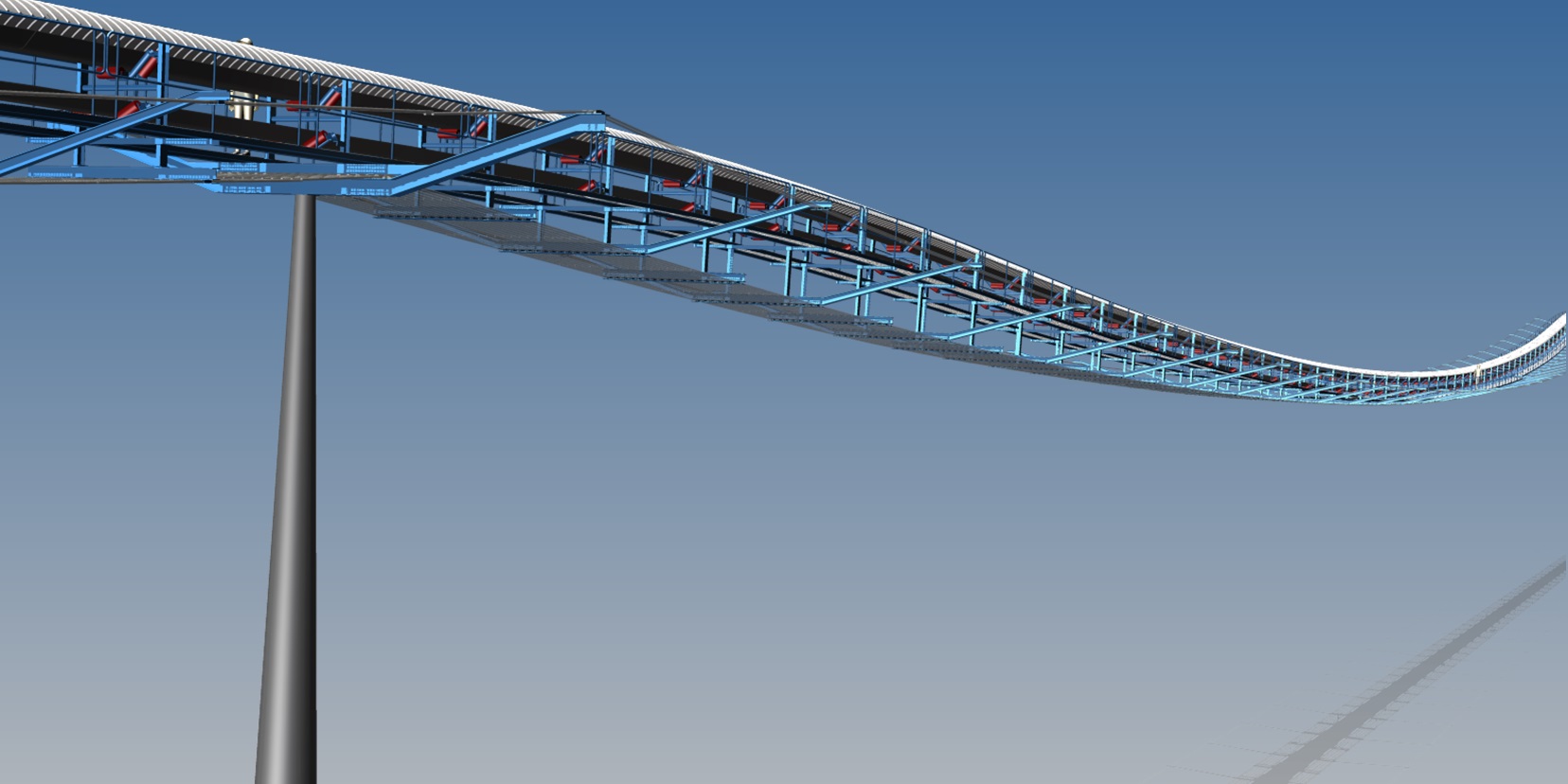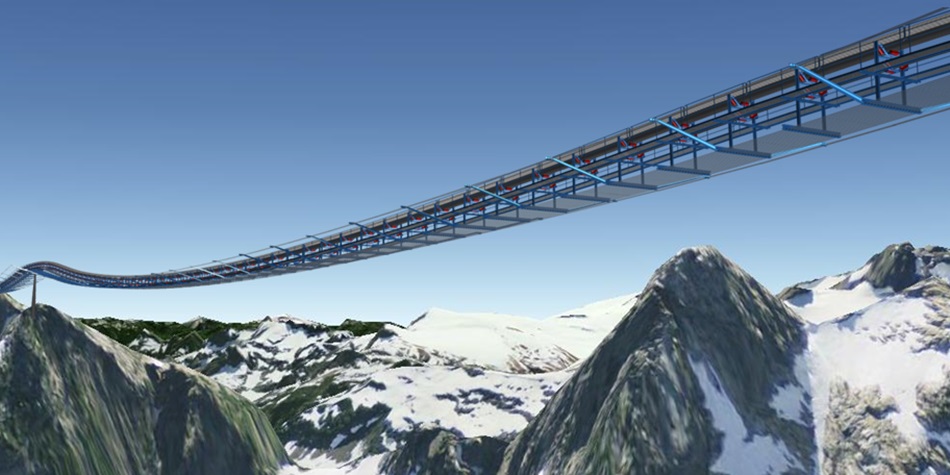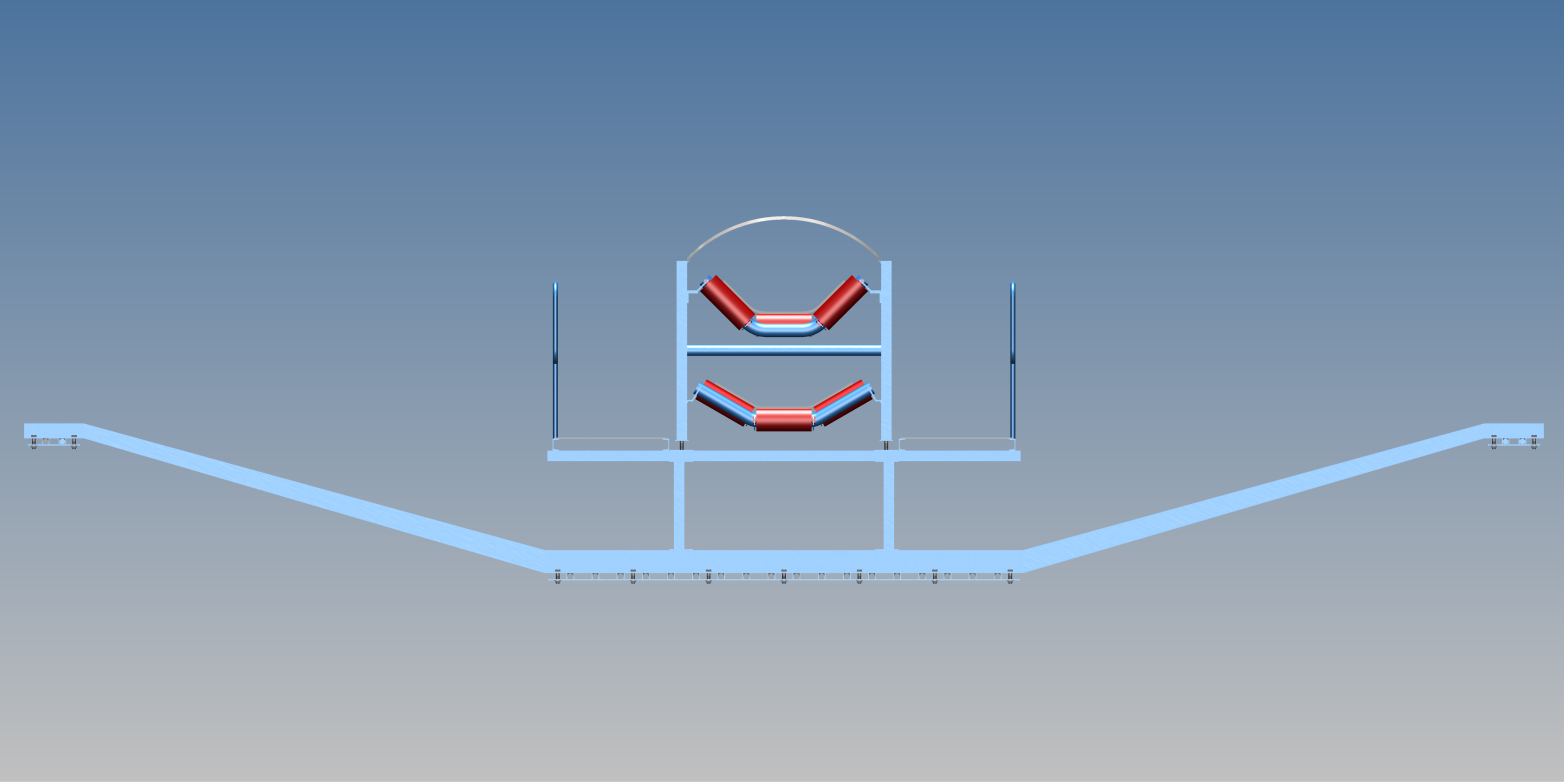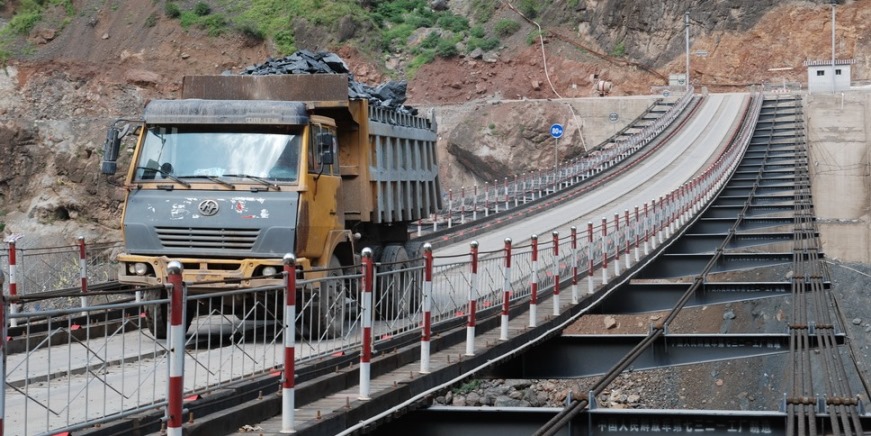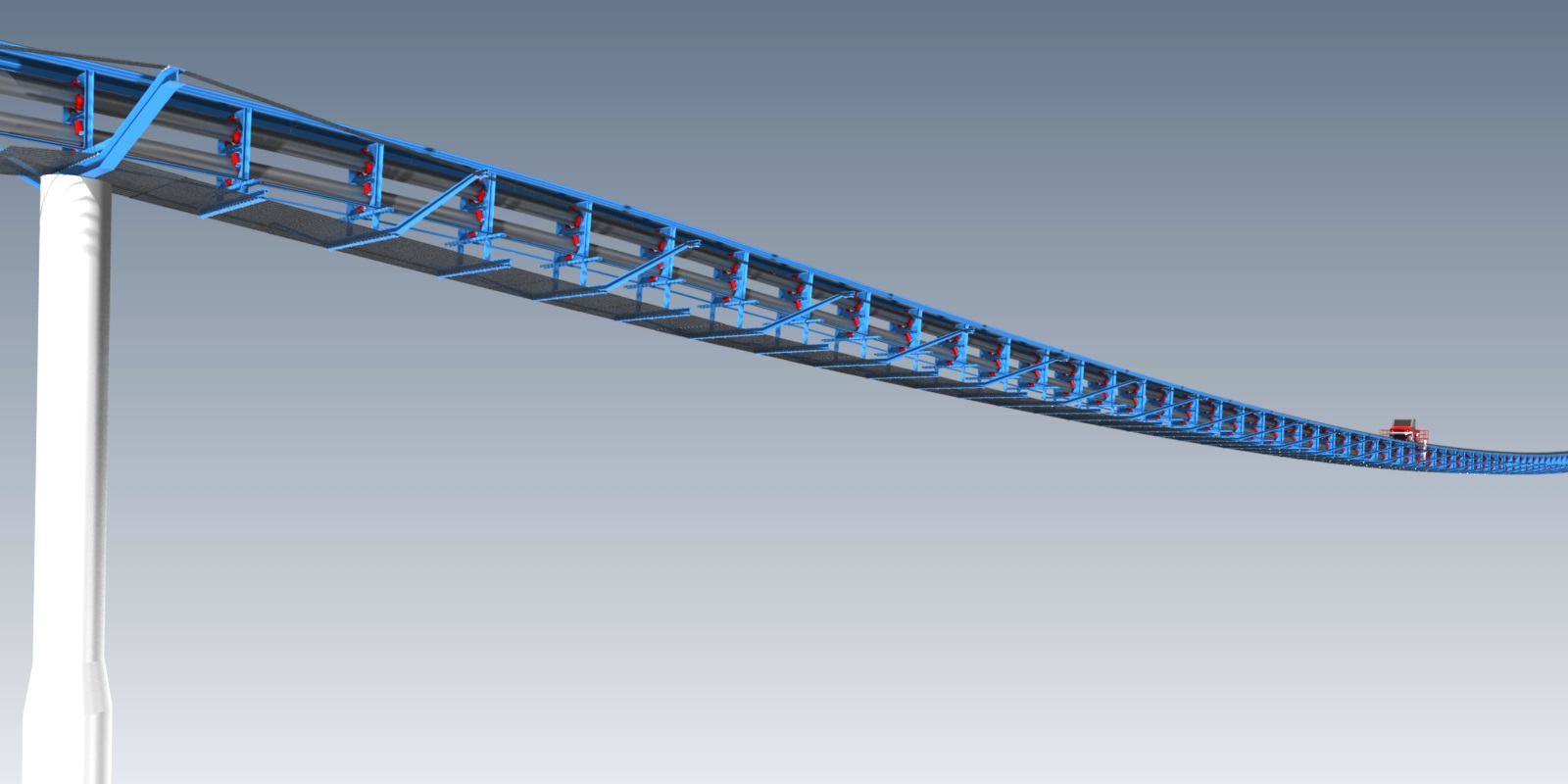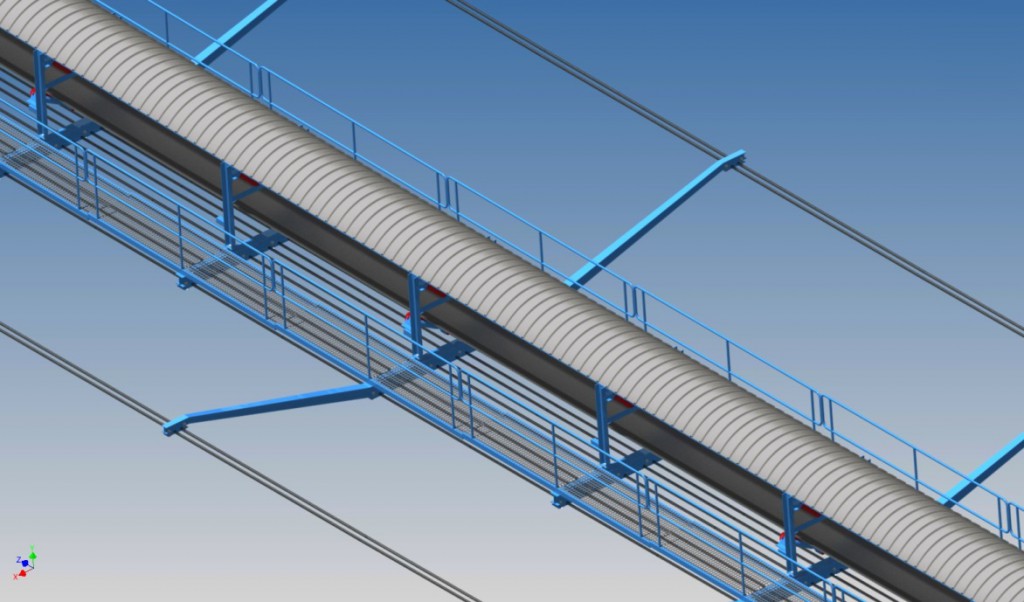Cable Bridge Conveyor™ can have hundreds of meters span between support bents, using an improved simple suspension bridge design. The bridge conveyor is very suitable as a material handling solution to cross rivers, valleys and hills. The minimal foot print also reduced the environmental impact. There is no need for high towers above the bridge for cable attachments, reducing construction costs.
Cable Bridge Conveyor Structure
The conveyor bridge deck beam is directly supported on tensioned steel cables. Conveyor idler frames are directly mounted on bridge deck beams, which are the same as how conventional conveyors are installed. Cable Bridge Conveyor can also accommodate horizontal curves by extending the width of the bridge deck beam and shifting the idler frame laterally. The extended arm of bridge deck beam with stabilizing cables at the ends provides additional torsional stiffness to stabilize the bridge against dynamic disturbances.
Conveyor Belt in the Cable Bridge Conveyor
The conveyor belt curve is controlled by the conveyor idler frame height, so that the belt curve near the support point is a convex curve. The belt curve near the center of the bridge span is a concave curve. The curve radius is calculated interactively along with the bridge line shape using Finite Element Analysis. The belt curve radii are controlled to allowable range according to industry standards like CEMA or DIN, and conveyor belt manufacturer’s catalog.
Analysis of the Bridge Structure
The conveyor bridge has undergone rigorous Finite Element Analysis, to properly calculate the bridge curve shape and its interaction with the belt tension, along with steel cable stress, and bridge deck beam stress. Modal vibration analysis is also done to analyze the modal frequency of the Cable Bridge Conveyor. Various design parameters are optimized to increase modal frequency so the Cable Bridge Conveyor has improved stability. For long span bridge, the twisting mode is more important compared to other vibration modes. The bridge deck beam design and stabilizing cables reduce the wind induced twisting, increase the stability compared to typical long span suspension structure.
More on the Improved Simple Suspension Bridge

